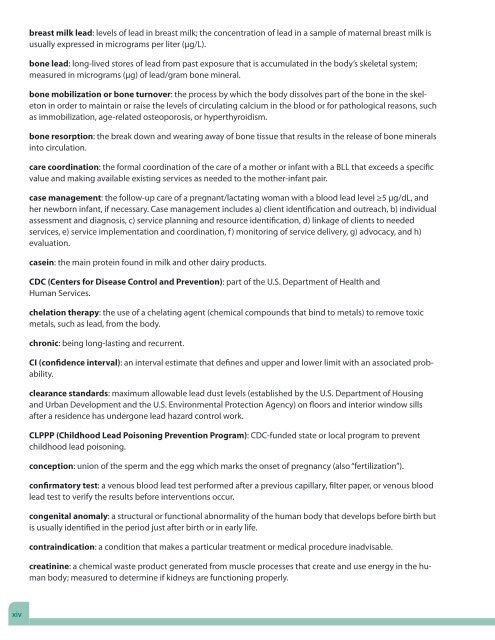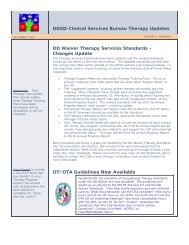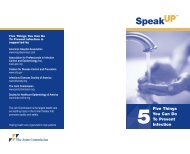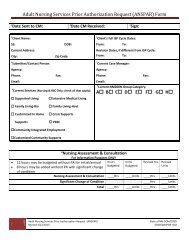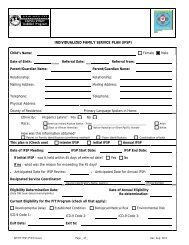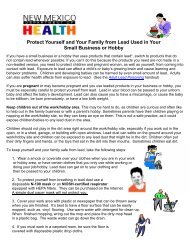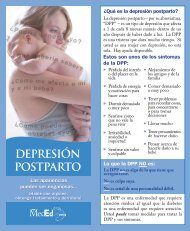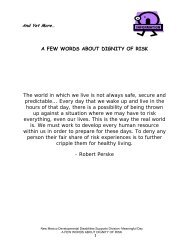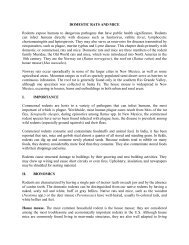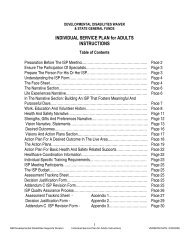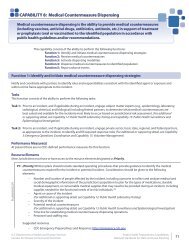Guidelines for the Identification and Management of Lead Exposure
Guidelines for the Identification and Management of Lead Exposure
Guidelines for the Identification and Management of Lead Exposure
Create successful ePaper yourself
Turn your PDF publications into a flip-book with our unique Google optimized e-Paper software.
east milk lead: levels <strong>of</strong> lead in breast milk; <strong>the</strong> concentration <strong>of</strong> lead in a sample <strong>of</strong> maternal breast milk isusually expressed in micrograms per liter (µg/L).bone lead: long-lived stores <strong>of</strong> lead from past exposure that is accumulated in <strong>the</strong> body’s skeletal system;measured in micrograms (µg) <strong>of</strong> lead/gram bone mineral.bone mobilization or bone turnover: <strong>the</strong> process by which <strong>the</strong> body dissolves part <strong>of</strong> <strong>the</strong> bone in <strong>the</strong> skeletonin order to maintain or raise <strong>the</strong> levels <strong>of</strong> circulating calcium in <strong>the</strong> blood or <strong>for</strong> pathological reasons, suchas immobilization, age-related osteoporosis, or hyperthyroidism.bone resorption: <strong>the</strong> break down <strong>and</strong> wearing away <strong>of</strong> bone tissue that results in <strong>the</strong> release <strong>of</strong> bone mineralsinto circulation.care coordination: <strong>the</strong> <strong>for</strong>mal coordination <strong>of</strong> <strong>the</strong> care <strong>of</strong> a mo<strong>the</strong>r or infant with a BLL that exceeds a specificvalue <strong>and</strong> making available existing services as needed to <strong>the</strong> mo<strong>the</strong>r-infant pair.case management: <strong>the</strong> follow-up care <strong>of</strong> a pregnant/lactating woman with a blood lead level ≥5 µg/dL, <strong>and</strong>her newborn infant, if necessary. Case management includes a) client identification <strong>and</strong> outreach, b) individualassessment <strong>and</strong> diagnosis, c) service planning <strong>and</strong> resource identification, d) linkage <strong>of</strong> clients to neededservices, e) service implementation <strong>and</strong> coordination, f) monitoring <strong>of</strong> service delivery, g) advocacy, <strong>and</strong> h)evaluation.casein: <strong>the</strong> main protein found in milk <strong>and</strong> o<strong>the</strong>r dairy products.CDC (Centers <strong>for</strong> Disease Control <strong>and</strong> Prevention): part <strong>of</strong> <strong>the</strong> U.S. Department <strong>of</strong> Health <strong>and</strong>Human Services.chelation <strong>the</strong>rapy: <strong>the</strong> use <strong>of</strong> a chelating agent (chemical compounds that bind to metals) to remove toxicmetals, such as lead, from <strong>the</strong> body.chronic: being long-lasting <strong>and</strong> recurrent.CI (confidence interval): an interval estimate that defines <strong>and</strong> upper <strong>and</strong> lower limit with an associated probability.clearance st<strong>and</strong>ards: maximum allowable lead dust levels (established by <strong>the</strong> U.S. Department <strong>of</strong> Housing<strong>and</strong> Urban Development <strong>and</strong> <strong>the</strong> U.S. Environmental Protection Agency) on floors <strong>and</strong> interior window sillsafter a residence has undergone lead hazard control work.CLPPP (Childhood <strong>Lead</strong> Poisoning Prevention Program): CDC-funded state or local program to preventchildhood lead poisoning.conception: union <strong>of</strong> <strong>the</strong> sperm <strong>and</strong> <strong>the</strong> egg which marks <strong>the</strong> onset <strong>of</strong> pregnancy (also “fertilization”).confirmatory test: a venous blood lead test per<strong>for</strong>med after a previous capillary, filter paper, or venous bloodlead test to verify <strong>the</strong> results be<strong>for</strong>e interventions occur.congenital anomaly: a structural or functional abnormality <strong>of</strong> <strong>the</strong> human body that develops be<strong>for</strong>e birth butis usually identified in <strong>the</strong> period just after birth or in early life.contraindication: a condition that makes a particular treatment or medical procedure inadvisable.creatinine: a chemical waste product generated from muscle processes that create <strong>and</strong> use energy in <strong>the</strong> humanbody; measured to determine if kidneys are functioning properly.xiv


